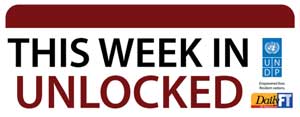Saturday Dec 14, 2024
Saturday Dec 14, 2024
Friday, 20 May 2016 00:00 - - {{hitsCtrl.values.hits}}
By Kulunu Jayamanne 
The world has turned a corner. With the onset of the post-2015 development agenda, nations and its people are on a path towards achieving sustainable human development (the amalgamation of sustainable development and human development) institutionalised by a commitment to the framework that is the global goals. The next 15 years present major economic, social and environmental challenges and the ability of communities to empower themselves and be resilient in the face of those, largely determines the extent of sustainable human development achieved both for people and the planet. To surge ahead on that path, innovation(s) can be the ideal vehicle and youth can be its best drivers.
In the words of Albert Einstein: “we can’t solve problems by using the same kind of thinking we used when we created them.”
The current development landscape of Sri Lanka presents many opportunities for youth and innovation in the 2030 development agenda. 
As the country moves in the path towards meaningful reconciliation, the nation is also looking ahead to a new constitution to be the bedrock on which long term policy and legislation can be more consistent and progressive so that they contribute to the creation of institutions that are inclusive. This is an ideal opportunity for young people to raise their voice and let their concerns and ideas be heard.
It is one way to actively engage in the decision making and norm setting processes of the country.
Young people have the ability to create a platform for a conversation on development issues. They have the capability to give prominence to issues that have not been given the required attention up to date, promote more inclusivity by engaging more non-traditional and marginalised partners. This creates an innovative space in the country where a constant cauldron of ideas, perspectives and experiences interact to come up with solutions for issues on a national and a local level.
Young people want to create the future that they want. They have a vested interest in how the present is being governed and future being shaped.
They would want greater accountability from policy makers and those in power, constantly at their heels demanding for better decisions, and wield the power to objectively remove or install them in power purely out of interest for the future.
According to the Human Development Report 2015 (UNDP, 2015) Sri Lanka is ranked 73rd and is in the ‘high human development’ category.
Owing to a more than decent structure (especially for a developing country) that provides basic services such as health and education, Sri Lanka has performed well in many indicators and is ranked higher than many countries in the middle income category with a higher per capita income.
There is always room for improvement which is echoed by aspirations of youth. Access to higher education and securing desired employment are prime considerations for youth.
From a purely economic development perspective, Sri Lanka is adapting and adjusting to life as a middle income country. Being in that category presents the country with exciting benefits and challenges.
But one important classification that young people can shift people’s attention to is that of moving up the ladder of being a factor driven economy, and now an efficiency driven economy into an innovation driven economy.
Reaching that level means endless possibilities for growth for Sri Lanka. The country will have the capacity to create more effective processes, products, and business models. Young people are also risk takers.
The prospect of achieving their goals is more of an incentive than any fear of failure known to them.
Hence youth can contribute to building a strong, competitive entrepreneurial culture which can help Sri Lanka move up the Global Innovation Index which considers a multitude of factors and indicators.
Out of 141 economies Sri Lanka is ranked 85th (GII, 2015).
Sustainable human development is complex and multi-dimensional and requires a multi-sectoral approach which should involve as many stakeholders.
It calls for an able party to be the flag-bearer for that transformation, to be an ally of the government and its partners. Youth are in position to successfully assume that role.
This will result in the fruition of youth friendly policies which the youth could ride on to advocate for more positive change in their communities.
To innovate is to sufficiently grasp the needs of the beneficiary of the solution. Be it providing access to safe drinking water or access to justice, understanding the scale and scope, having a sustainability component, proving to be open and collaborative, and most importantly the capacity to transfer ownership of a working institution to communities are hallmarks of an innovative solution.
Innovation can just be even minute incremental changes in development practices or even reinventing and reselling an existing infrastructure or idea and increasing its public appeal as much as innovation is about loud, revolutionary and new ideas.
Sri Lankan youth can find innovative solutions in the areas of poverty reduction, energy, education, reducing inequalities and urban development just to name a few development priorities for Sri Lanka. Both the rallying cry and the unique selling point for youth should be that governments that recognise the value of collaborating with young people as partners and establish clear and explicit pathways for their meaningful participation from the outset will be much better positioned to achieve the 17 SDGs.
Sri Lanka’s youth are now no longer the focus of negative public attention for reasons such as violence and political extremism.
They are critical thinkers asking questions about the country’s future.
They are change makers with the ability to mobilise fellow citizens to engage and to volunteer in their communities.
They are communicators with the message of a new development agenda.
They are leaders ready to be inspired and empowered and do the same themselves.
Most of all they are innovators offering fresh perspectives and alternative solutions to issues that they understand best more than anyone.